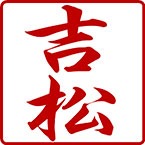Monitors can display ~16.7 million colors (~1 billion for wide gamut displays) but inkjet printers use 6 to 10 discrete colors and print dots so close to each other that the human eye sees them as a continuous tone. Due to inherent limitations, inkjet printers can’t reproduce all 16.7 million colors of a monitor.

Wireframe is ProPhoto RGB color space, gray solid is typical inkjet printer color gamut.
The graph (left) compares ProPhoto RGB color space (wireframe) to a typical printer gamut (gray). ProPhoto is the largest common space used in digital photography and actually encompasses a bit more than the human eye can see. The gray shape inside depicts the gamut of a typical IJP. As you can see, the printer can’t reproduce huge swaths of color visible to the human eye.

Display color space (wireframe) versus IJP space
This next graph compares ~16.7 million colors of a monitor (wireframe) to the colors available on an IJP (gray). Although the number of colors appears roughly equal, there are large sections that don’t intersect. The black outline at the bottom shows IJP color boundary while the color outline shows the edges of the monitor color space. Notice how the spaces are mismatched.
When the computer tells the IJP to print a blue color outside the monitor space but inside the IJP space, all is well because the print will more closely match the original. The colors just weren’t visible on the monitor but the final print will be correct. However, when the IJP is sent commands to print dark blue to magenta tints outside the black IJP outline, the final print will not match what was seen on the monitor because the IJP can’t reproduce those colors. So, what to do?
This is where printer profiles come to the rescue. Profiles “map” colors so the printer knows when a color is outside it’s gamut (range) and what to do with it. “What to do” is determined by “rendering intent.” For fine art purposes, “perceptual” and “relative” are generally the most useful intents.

Relative Colorimetric rendering intent compress all out-of-gamut colors to the closest in-gamut point.
Relative Colorimetric “clips” the colors so all colors outside the gamut are mapped to the closest color in gamut. This preserves all the in-gamut colors relative to other colors but compresses all out-of-gamut colors. The result is loss of details in shadows, an issue for photographs but, usually, not so much in paintings.
 Perceptual rendering intent maps all colors so that, while individual colors may have shifted slightly, the overall visual effect is retained. This works well for most photographs as shadow details are preserved while slight color shifts aren’t usually noticeable. It can work well for paintings as long as the artist understands colors may have shifted in order to preserve shadow details.
Perceptual rendering intent maps all colors so that, while individual colors may have shifted slightly, the overall visual effect is retained. This works well for most photographs as shadow details are preserved while slight color shifts aren’t usually noticeable. It can work well for paintings as long as the artist understands colors may have shifted in order to preserve shadow details.
The closest analogy to illustrate the concept of printer profiles is crayons. If an artist uses a box of 128 crayons and then asks her printer to replicate the painting using a box of 24 crayons, some colors will have to be mixed using two or more crayons to approximate the original color. That, in a nutshell, is what printer profiles do.

Recent Comments